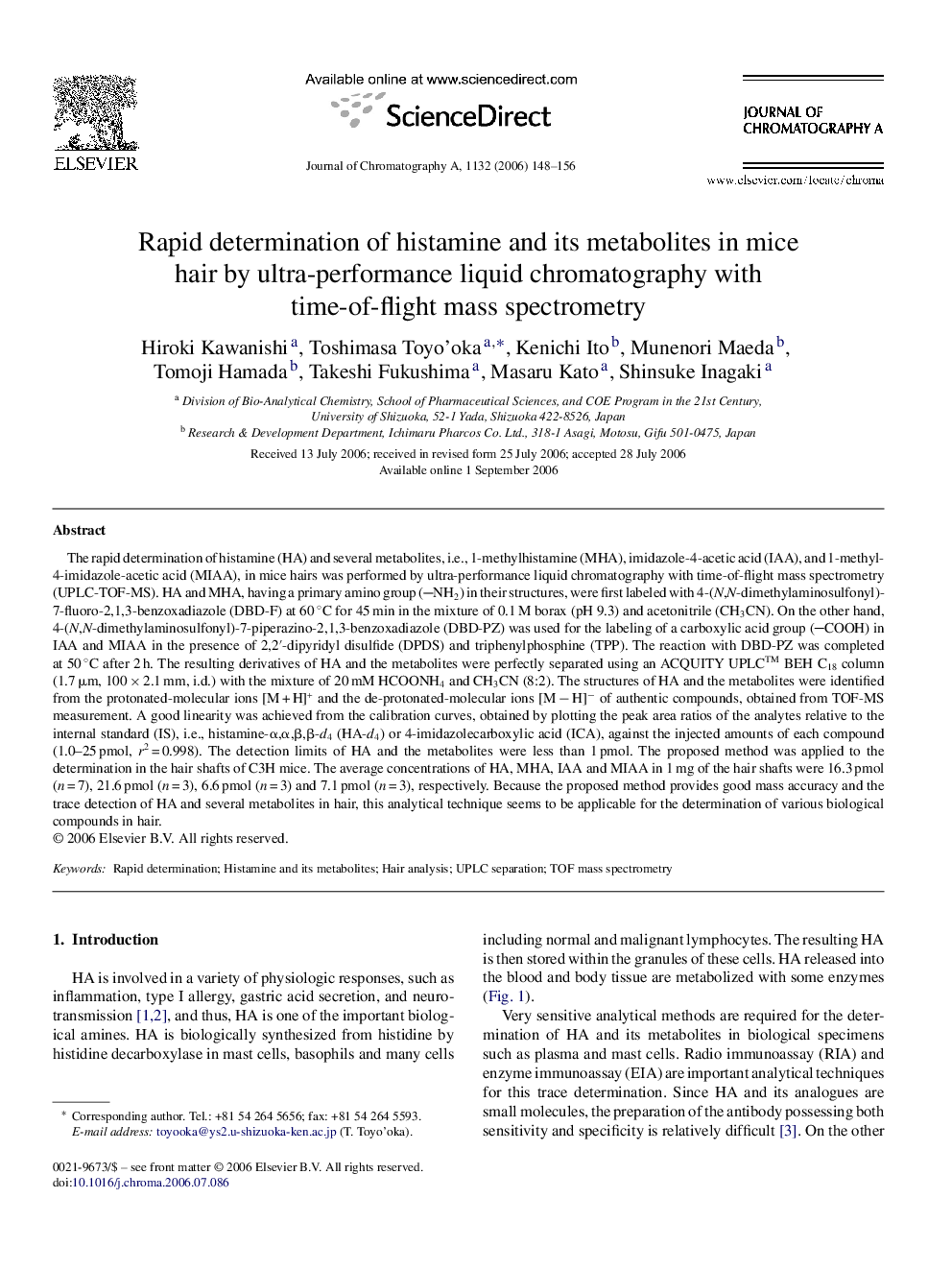| Article ID | Journal | Published Year | Pages | File Type |
|---|---|---|---|---|
| 1209584 | Journal of Chromatography A | 2006 | 9 Pages |
The rapid determination of histamine (HA) and several metabolites, i.e., 1-methylhistamine (MHA), imidazole-4-acetic acid (IAA), and 1-methyl-4-imidazole-acetic acid (MIAA), in mice hairs was performed by ultra-performance liquid chromatography with time-of-flight mass spectrometry (UPLC-TOF-MS). HA and MHA, having a primary amino group (NH2) in their structures, were first labeled with 4-(N,N-dimethylaminosulfonyl)-7-fluoro-2,1,3-benzoxadiazole (DBD-F) at 60 °C for 45 min in the mixture of 0.1 M borax (pH 9.3) and acetonitrile (CH3CN). On the other hand, 4-(N,N-dimethylaminosulfonyl)-7-piperazino-2,1,3-benzoxadiazole (DBD-PZ) was used for the labeling of a carboxylic acid group (COOH) in IAA and MIAA in the presence of 2,2′-dipyridyl disulfide (DPDS) and triphenylphosphine (TPP). The reaction with DBD-PZ was completed at 50 °C after 2 h. The resulting derivatives of HA and the metabolites were perfectly separated using an ACQUITY UPLC™ BEH C18 column (1.7 μm, 100 × 2.1 mm, i.d.) with the mixture of 20 mM HCOONH4 and CH3CN (8:2). The structures of HA and the metabolites were identified from the protonated-molecular ions [M + H]+ and the de-protonated-molecular ions [M − H]− of authentic compounds, obtained from TOF-MS measurement. A good linearity was achieved from the calibration curves, obtained by plotting the peak area ratios of the analytes relative to the internal standard (IS), i.e., histamine-α,α,β,β-d4 (HA-d4) or 4-imidazolecarboxylic acid (ICA), against the injected amounts of each compound (1.0–25 pmol, r2 = 0.998). The detection limits of HA and the metabolites were less than 1 pmol. The proposed method was applied to the determination in the hair shafts of C3H mice. The average concentrations of HA, MHA, IAA and MIAA in 1 mg of the hair shafts were 16.3 pmol (n = 7), 21.6 pmol (n = 3), 6.6 pmol (n = 3) and 7.1 pmol (n = 3), respectively. Because the proposed method provides good mass accuracy and the trace detection of HA and several metabolites in hair, this analytical technique seems to be applicable for the determination of various biological compounds in hair.
